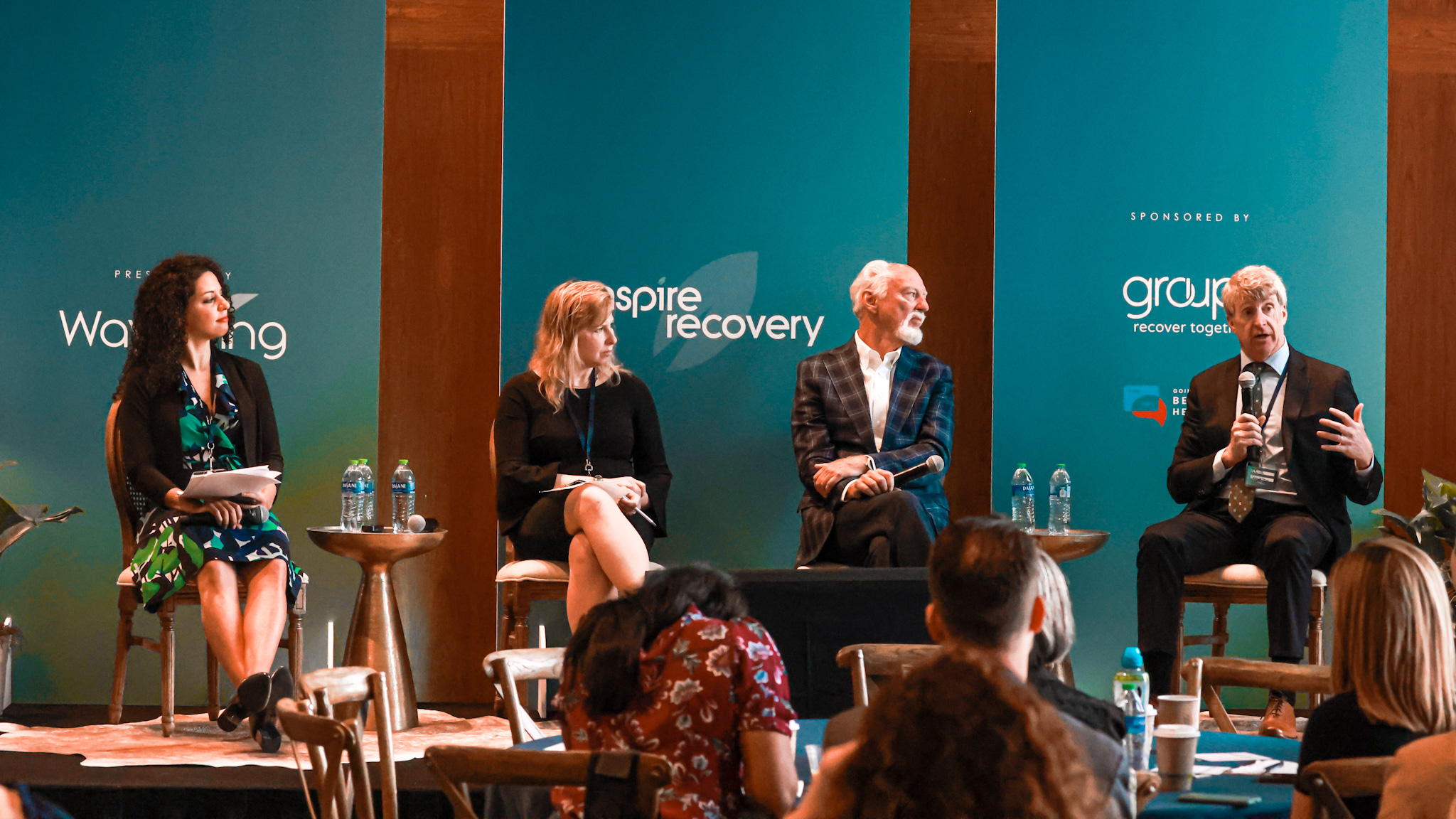The first annual Inspire Recovery conference took place in Nashville last week. The event hosted representatives from various organizations nationwide, from managed care to state Medicaid agencies to the provider and social support communities. This full-day conference presented by Wayspring included specific panels addressing substance use disorder (SUD) treatment access, State and health plan collaboration in Medicaid, and the role of lived experience in engaging hard-to-reach members.
Here are our key insights from the first annual Inspire Recovery Conference.
 Payors are pushing for collaborative, value-based models.
Payors are pushing for collaborative, value-based models.
In a fee-for-service environment, health plans and providers sit on opposite ends of the table. The relationship between the two parties centers around negotiation – not collaboration. Providers are paid the same amount for treating patients with varying levels of acuity and motivation to stay in treatment. Despite wanting what is best for the patient, the provider usually allocates time and attention to the “easier” patient, who will most likely come back for more services. The direct result is a large population overlooked by the system.
Across the payor audience at the Inspire Recovery conference, several themes were evident: SUD is highly complex, the current system is failing, and there is a pressing need for greater collaboration between payors and providers. Those overlooked by the system due to their multi-dimensional needs drive outsized costs for the health plan and negatively impact quality scores critical to plan performance.
To solve this challenge, payors recognize the need to partner closely with data-driven providers who are integrated at the community level and have nuanced knowledge of the population. Payors are looking for “true” value-based care in SUD, which means close integration with health plan case management teams, regular collaboration on complex patient cases, bi-directional data feeds to engage patients into recovery collectively, and of course – complete alignment on the desired clinical and financial outcome. The Medicaid SUD population is one of the most evasive in all of healthcare, and as discussed in a panel during Inspire Recovery, it takes a village to bring all of the disparate pieces together.
 Lived experience and community-based programs are essential for longitudinal programs focused on the SUD / Medicaid space.
Lived experience and community-based programs are essential for longitudinal programs focused on the SUD / Medicaid space.
The ability of individuals with SUD, especially those in Medicaid, to sustain their recovery and improve their overall physical health often hinges on meaningful connections and engagement. While the term may seem nebulous, “engagement” for this population can be distinctly defined as a meaningful two-way interaction that results in process towards a specific goal, be it finding housing, creating a recovery network, or connecting to medication assisted treatment. A key to fostering these meaningful engagements is to intentionally include individuals with their own lived experience with SUD in the conversation. By doing this, engagements are not just a “check-the-box” activity but help to build a relationship with mutual understanding, trust, and empathy. It is important to specifically call out that individuals with lived experience should not be pigeonholed into a specific role based on this lived experience. Instead, these individuals should be represented not just on the company’s front lines but at all levels of leadership across an organization.
In addition to infusing individuals with lived experience into your organization, a successful longitudinal model supporting must be able to connect individuals living with SUD to community-based organizations in a timely fashion. It is imperative that these connections be tailored not only to the individual but to the community in which that individual thrives.
There is no cookie-cutter model for helping individuals achieve and sustain long-term recovery. However, empowering those with lived experience and fostering deep connections with community organizations are two essential components for creating a longitudinal model.
 Regulatory changes create uncertainty and opportunity.
Regulatory changes create uncertainty and opportunity.
Three major changes are occurring in the Medicaid SUD space at this time: 1) Medicaid redeterminations; 2) Proposed DEA guidance regarding the reinstitution of the Ryan Haight Act as a result of the expiration of the COVID public health emergency; and 3) the recent elimination of the X-waiver for buprenorphine prescribing.
Medicaid redeterminations will create lapses in coverage for people in treatment. Health plans are working hard to re-enroll members who need services; however, many lower acuity or stable SUD-diagnosed members will likely lose coverage. This interruption or loss of coverage may limit access to SUD treatment for those who are newly in need and risks removing those currently receiving care from the healthcare system. This loss of treatment access has the potential to result in a return to substance use for many individuals and can ultimately lead to potentially fatal overdose or other costly medical and behavioral health complications.
During the COVID public health emergency (PHE), a suspension of the Ryan Haight Act, which mandates the in-person initial evaluation of individuals as part of prescribing buprenorphine for the treatment of opioid use disorder (OUD), allowed for the wide-scale expansion of virtual/telemedicine care of patients with SUD. With the return of the Ryan Haight Act requirements as the PHE expires, the DEA has proposed guidance that has significant implications for the provision of virtual SUD care and upholds the intentions of the Ryan Haight Act. If finalized, it will require in-person evaluations to be conducted retroactively for patients who began buprenorphine treatment virtually during COVID and will grant only 30-day grace periods within which new patients must have an in-person evaluation to have refills of buprenorphine. The inability or unwillingness of patients currently receiving buprenorphine virtually will likely create lapses in adherence to medication for the treatment of opioid use disorder (MOUD), which again risks increases in fatal overdoses. Also, these requirements will have the consequence of reducing access to SUD treatment by eliminating provider supply, as virtual-only MOUD companies may be forced out of business or rush to invest in a geographically limited, brick-and-mortar presence. Hybrid care models that can conduct in-person initial visits will likely have the opportunity to take significant market share where virtual-only supply goes offline.
Finally, eliminating the DATA 2000 X-waiver for buprenorphine prescribing, as part of the legislative package at the end of 2022, has the potential to encourage more provider supply and thus increase access to SUD care. However, this assumes the X-waiver requirement was a barrier to a large pool of providers who both are interested and comfortable prescribing buprenorphine for OUD. It will also be interesting to see what implications the removal of the X-waiver has on the quality of OUD care delivery and perpetual concerns around medication misuse and diversion.
Did you miss Inspire Recovery or want to learn more about how Wayspring is addressing these key insights? Talk with us today.